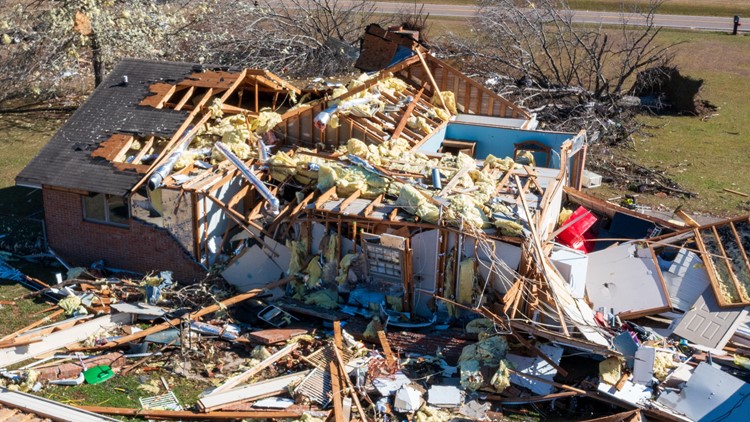Some standard homeowners insurance policies cover tornado damage, but you may need to purchase additional windstorm coverage if you live in a storm-prone area.


An estimated 1,200 tornadoes touch down in the U.S. every year. Though tornadoes are more likely to occur at certain times of year, they can strike at any time.
Tornadoes ravaged parts of the Deep South in late March 2023, killing at least 21 people in Mississippi and one in Alabama. The same storm system also left hundreds of damaged or destroyed homes and buildings in its wake.
Following the disaster, online search data show many people are asking if homeowners insurance covers tornado damage.
THE QUESTION
Do homeowners insurance policies cover tornado damage?
THE SOURCES
THE ANSWER
![]()
Some standard homeowners insurance policies cover wind damage to your home from tornadoes. But, if you live in a state where tornadoes are common, you may need additional windstorm coverage.
WHAT WE FOUND
Some standard homeowners insurance policies cover wind damage to your home and belongings from tornadoes and other severe weather events, according to the Insurance Information Institute (III) and other experts.
But people who live in storm-prone areas may need separate wind coverage, FEMA’s National Flood Insurance Program and insurance companies say.
Windstorms, a general term that includes tornadoes, are listed under some policies’ covered perils. You may also have an “all-risk” policy that covers tornado damage, insurance company Progressive says on its website.
But some homeowners insurance policies exclude wind damage from a tornado or other storm, according to Progressive and AllState. That means your insurance company would not cover the cost of repairs if your home is damaged or destroyed by a tornado.
People who live in tornado-prone areas should ask their insurance company if their policy has a wind exclusion.
If your policy does not cover windstorm damage, you can purchase windstorm insurance as an add-on to your existing policy or as a separate policy. Some insurance companies may even require you to do so if you live in an area that’s prone to tornadoes and other wind events.
Windstorm insurance is most common in Florida, Texas, Oklahoma, and other states that are prone to experiencing tornadoes or hurricanes, Policygenuis says.
In some cases, your homeowners insurance policy may also have a separate deductible for windstorm claims that may be higher than your policy’s standard deductible, Progressive explains.
Tornadoes can often be accompanied by heavy rain. But most homeowners insurance policies do not cover flood damage.
Instead, people can purchase separate flood insurance policies from a private company or the National Flood Insurance Program (NFIP) managed by the Federal Emergency Management Agency (FEMA).
If your home is damaged by a tornado, the III recommends contacting your insurer as soon as possible to file a claim. You should also take photos of any damage, along with making a detailed list of all damaged or destroyed personal property.
In addition, you should be sure to save all receipts for expenses incurred while you are unable to be in your home.
The VERIFY team works to separate fact from fiction so that you can understand what is true and false. Please consider subscribing to our daily newsletter, text alerts and our YouTube channel. You can also follow us on Snapchat, Twitter, Instagram, Facebook and TikTok. Learn More »
Follow Us
Want something VERIFIED?
Text: 202-410-8808
.png)









 English (US) ·
English (US) ·